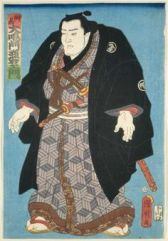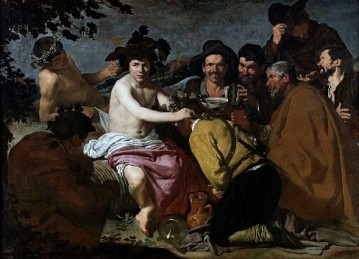Looking for Love In All The Wrong Places
Through A Handsome Salesman’s Eyes: Portrait of Emile Zola

Looking For love in all the Wrong Places
I once thought I found my soul-mate in a textbook salesman. This handsome fellow stood in my office doorway, chatting about all things art and textbook selection.
Our musings ranged from Frank Sinatra, Italy, Mardi Gras, Boz Scaggs (really? you’re a fan too???), Indian food, Fairfield Porter to tabasco sauce. It seemed our interests perfectly aligned!
I looked forward to every visit and maybe, just maybe, a life-time of free book samples.
Then one day, after a particularly lively conversation, I swiveled around and faced my cluttered bulletin board. It was all there. The art postcards, concert stubs, menus…laid out like a friggin’ road map.
Don’t laugh. I am not the only one to lay it all out there on an office wall. Another to tell his story in public was Edouard Manet in his bulletin board biography of a painting, Portrait of Emile Zola.
So let’s play handsome salesman and decipher a cluttered desk and office supplies for clues into the artist, Edouard Manet and his new soul mate, the rising novelist and art critic, Emile Zola.
The thanks-for-having-my-back, Portrait.
Many painters were grateful to Emile Zola. The writer was a tireless defender of the often maligned Impressionists.
 Zola’s ideas on True Art challenged traditional Academy standards. Art, he stated, should bear the imprint of its creator, be original and not cave to dictates of society. In short. Art should be a Manet.
Zola’s ideas on True Art challenged traditional Academy standards. Art, he stated, should bear the imprint of its creator, be original and not cave to dictates of society. In short. Art should be a Manet.
And Zola said so in a skinny little blue book called “In Defense of Manet.”
Manet’s portrait of Zola is a thank-you note to the sitter for this defense. In the painting, the book is tucked behind an East Asian ink well and quill (symbolizing the sitter’s occupation) and serves as the artist’s signature.

It's Not My Best Side
Now let’s be honest.


As portraits go, this doesn’t exactly put the 26-year-old Zola in the best light. Odilon Redon (1840- 1916) observed “(This portrait) is rather a still life, so to speak, than the expression of a human being”.
Here, the writer and political activist is shown at his work table. He is thumbing through an Art book (perhaps a comely text book representative just visited?), when his blank-stare gaze has locked onto something beyond his desk.
It is a similar stare that caused the ruckus that cemented team Zola/Manet.
Whadda YOU looking at?

The reason anyone would have to defend Manet and his painting, “Olympia” has to do with the fierce scandal the painting produced. The subject (a prostitute), the spatial treatment, and the impudent ‘stare’ of the 16-year-old courtesan toppled a top hat or two while on view at the 1865 Salon.
The French, though well accustomed to gazing upon nude women in Art, weren’t ready for the nudes to stare back.
Checking bags for spray-paint
 NO. REALLY. Two full-time guards were hired to prevent the spitting upon or other degradation committed to this painting.
NO. REALLY. Two full-time guards were hired to prevent the spitting upon or other degradation committed to this painting.
“Before anyone knew what was happening,” writes art critic Eunice Lipton, “respectable Parisians were sweeping through the Salon’s drafty halls brandishing walking sticks and umbrellas; they were heading toward Olympia with murder on their minds.”
In the midst of the haters, Emile Zola would stand up for painter.
 You lookin’ at ME?
You lookin’ at ME?
It only made sense then, in his This is Your Life (but okay, mostly mine) painting, Manet would include his own Olympia on the back wall.
But with a difference.
She is no longer glaring back at us, but rather, gazing adoringly at her hero, Zola.
Zola’s Sumo Angel

After 200 years of seclusion, in 1850, Japan had opened its doors and the result was a fascination with Japan and its Arts. The fascination, called Japonisme was shared by Zola, Manet and apparent in the works of their contemporaries.Short of dressing his friend in a kimono, Manet will take every opportunity to add an Eastern touch to the painting, including a glimpse of a Japanese screen on the painting’s edge and a Japanese print on the bulletin board.
In the print, a wrestler by Utagawa Kuniaki II watches over Zola.

Further conveying the two men’s tastes in art, we spot a reproduction of the Spanish painter, Diego Velazquez’s bawdy The Feast of Bacchus (also known as “The Drinkers”).
Sealing the Bromance
Zola was not in love with Manet’s portrait and hid it away in an antechamber of his home.
Who knows?
Maybe he found the stare too empty and the bulletin board too full.
Either way, the portrait sealed a friendship and left a bond that would last far beyond a writer’s cluttered walls.

Jean Cauthen is a Painter and fake Art Historian. She has a studio in Charlotte NC Her painting workshops in Ireland include a “Guinness and Art History” where she asks that participants keep any discrepancies to themselves and focus on the Guinness. Join her in June 2018!




Comments
Post a Comment